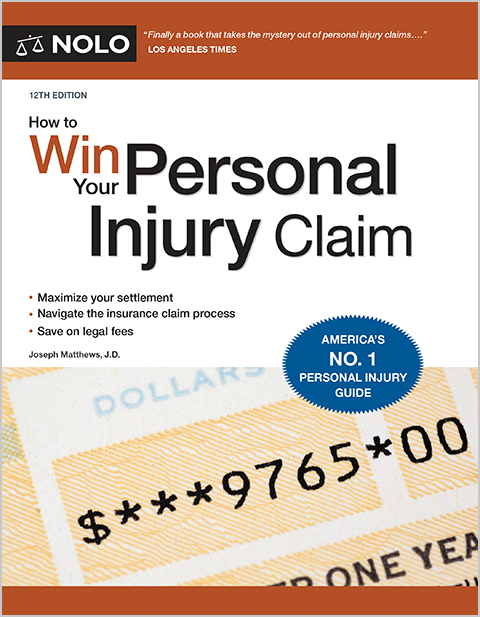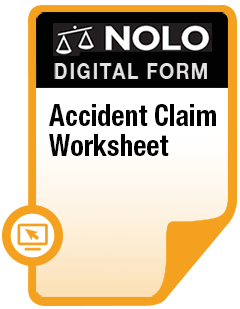Get up to speed on the history of asbestos litigation, and your options if you've been diagnosed with asbestos-related disease.
For the first half of the 20th century, asbestos was seen as a wonder product. Perfectly suited for countless industrial and consumer applications, it was lightweight, indestructible, and easy to use. Asbestos-containing products found their way into homes, schools, public buildings, and a wide range of products. Millions of people worldwide were exposed, directly and indirectly, usually without even being aware they were in harm's way.
But by the 1970s, the honeymoon was over. Science had established clear links between exposure to asbestos and deadly diseases like mesothelioma and asbestosis. In the decades since, more cancers have been associated with asbestos. Hundreds of thousands of illnesses and deaths have led to the longest-running tort litigation in the nation's history, leaving in its wake a long trail of suffering and misery, along with bankrupt manufacturers and sellers.
Starting with the record-setting asbestos federal multidistrict litigation, we provide a brief history of asbestos lawsuits. From there, we'll have a look at where asbestos litigation is today, and how you can pursue a claim for an asbestos-related illness or death.
Asbestos and the Places It's Found
Asbestos is a naturally-occurring mineral. It's small, thin fibers are microscopic in size, often appearing to be dust particles floating in the air. Given their size, asbestos fibers are readily inhaled. They lodge in nasal passages, the throat, lungs, and other organs. Once there, they can remain indefinitely, sometimes for years or decades.
Common Asbestos-Containing Products
From the late 1800s to the 1970s, it's hardly an exaggeration to say that asbestos-containing products were everywhere. According to the federal Consumer Product Safety Commission, these common products were among those made with asbestos:
- insulation for heating pipes, boilers, and furnace ductwork
- floor tiles, flooring materials, and adhesives
- cement sheetboard and paper used to insulate around furnaces and stoves
- door gaskets in furnaces and stoves
- soundproofing and decorative materials
- wall and ceiling patching and joint compounds
- textured wall and ceiling paints, including "popcorn" ceiling textures
- cement roofing, shingles, and siding materials
- artificial ashes for use in gas fireplaces
- fireproof gloves
- stove-top pads, and
- motor vehicle brake pads and linings, clutch parts, and gaskets.
The Dangers Start to Appear
As early as the 1930s, there were signs that exposure to asbestos was associated with health problems like scarring of the lungs and lung cancer. But there was money to be made—and lots of it—from producing and selling asbestos-containing products. The federal government lacked the legal tools to regulate the asbestos industry, and courts weren't able to hold manufacturers accountable, either.
In the 1960s, the bills started coming due. Studies had produced clear evidence of links between asbestos and cancers like mesothelioma. Most companies quit making asbestos-containing products by the 1970s or early '80s but by that point, it was too late. Decades of living, working with, and using asbestos and asbestos-containing products meant that illnesses and deaths were sure to mount—and they did.
Today, new asbestos claims are still being filed. Why are there new cases when most companies stopped using asbestos 40 or 50 years ago? Because asbestos-related illnesses tend to have a very long "latency" period, meaning the time between exposure and onset of disease. Asbestosis, mesothelioma, and other cancers can take 20 to 40 years or more to appear. It will be some time before asbestos litigation has fully run its course.
Who's Most at Risk?
Anyone who's had long-term, regular exposure to asbestos fibers is at risk of serious illness. But those working in industries that relied heavily on asbestos were—and still are—most likely to get sick. Today, exposures are described as being either primary or secondary.
Primary exposures. A primary exposure means someone had direct, personal interaction with asbestos and products containing it. Workers in construction, mining, manufacturing, firefighting, aerospace, shipbuilding, auto parts and repair, and defense jobs, along with military servicemembers, were most likely to experience primary exposures. Consumers using asbestos-containing products at home also were primarily exposed.
Secondary exposures. A person who came into contact with a primarily-exposed worker, their clothing and personal effects, and contaminated household carpets, furniture, and other property is said to have secondary asbestos exposure. This group often includes family members, friends, and coworkers of those with primary exposures.
What If There's Asbestos in My Home?
The first thing to understand is that you don't always need to take action in this situation, even if you're certain your home contains asbestos. Asbestos materials don't usually pose a health risk unless the fibers are disturbed and become airborne. But if there's a chance that the asbestos will be disturbed, or if you just want peace of mind, your options include fixing or removing the problem.
Fixing an asbestos problem. Fixing the problem usually means either sealing or covering the asbestos-containing material. Both approaches should be handled by a professional. Use of a sealant (on asbestos-containing insulation, for example) can either bind the asbestos fibers together or coat them with a material to prevent their release. Covering means enclosing the asbestos material to prevent the release of fibers, using a protective jacket or some other method.
Removing an asbestos problem. Asbestos removal is both expensive and hazardous. It creates the biggest risk of asbestos fiber release, so hiring a professional is a must. Removal usually only makes sense when it's required by law, or if you're making major changes to your home that could result in the disturbance of asbestos-containing material.
Early Days of Asbestos and Mesothelioma Litigation
When the dangers of asbestos first became known, mass-tort litigation—thousands or tens of thousands of lawsuits arising out of a common claim like a dangerous product—didn't exist. The law simply didn't give courts or lawyers the tools they needed to police industries responsible for widespread injuries and harms, sometimes to millions of people.
All that changed when 57-year-old Clarence Borel sued Fibreboard Paper Products Corporation in 1969. Borel, who had worked with asbestos insulation for more than 30 years, developed asbestosis and lung cancer. He sought compensation ("damages") for his injuries.
Borel argued that Fibreboard should be held liable under a then-new legal theory called "strict product liability." Using this theory, Borel didn't have to prove that Fibreboard was negligent or intended to injure him. He only had to prove that Fibreboard made a defective and dangerous product that caused him harm.
Unfortunately, Borel didn't live to see the $79,000 verdict he received. Asbestos-related illnesses ended his life. But strict liability, the claim he pioneered in asbestos lawsuits, was here to stay.
While this new theory meant that asbestos claimants could get the damages they deserved, it created another problem: Courts couldn't keep up with the ever-increasing number of personal injury and wrongful death claims. Lawyers and judges began looking for new ways to manage the flood of asbestos litigation.
Asbestos Multi-District Litigation
Multi-district litigation (MDL) is a common management tool in mass tort cases. In an MDL, federal civil lawsuits (noncriminal cases) from around the country are transferred to one federal district court. The cases must have one or more common questions of fact, meaning issues that are decided by looking at the evidence.
One judge manages all of the individual cases during discovery and other pretrial matters. If a case doesn't settle or get dismissed during MDL, the MDL rules say it should be sent back to the original court for trial. Sometimes, though, the MDL court will conduct trials of a few cases (called "bellwether trials") in the hope that the outcomes will encourage settlement of other MDL cases.
An asbestos MDL was created in 1991. Based in the Eastern District of Pennsylvania, it was called "In re: Asbestos Products Liability Litigation," MDL No. 875, and it was the longest-running MDL in history. A staggering 186,000 asbestos cases were processed through this MDL. The MDL wound down its work in 2019 and isn't accepting new cases anymore.
The Current Asbestos Lawsuit Landscape
The end of MDL No. 875 didn't end asbestos claims. Today, there are two main ways to bring an asbestos case:
- file a trust fund claim, or
- file a lawsuit in state court.
Trust Fund Claims
Lots of the companies that make or sell products containing asbestos have gone bankrupt, financially overwhelmed by the huge numbers of legal claims they've faced. Federal bankruptcy courts have required these companies to set up bankruptcy trust funds to assure a source of payment for asbestos-related claims. As of November 2024, asbestos trust funds had more than $30 billion in funds available for claim payouts.
If your asbestos claims are against companies that set up these trust funds, filing trust fund claims will be your quickest route to compensation. Streamlined filing and claim processing procedures mean that properly-filed claims can be paid and resolved more quickly and efficiently. You might be able to file claims with more than one fund.
Several factors will impact your trust fund claim timeline, including:
- the length and complexity of your health history
- when, where, and how you were exposed to asbestos-containing products
- how many trust funds will be involved in your claims
- how many claims are pending against those trust funds, and
- the amounts the trust funds have available for payment of claims.
After you've hired counsel, expect them to investigate your health and exposure histories, gather medical records and other information, calculate your damages, and prepare your claims for filing. Depending on the circumstances, this process could take from several weeks to several months.
Once your trust fund claims are in order and your lawyer files them, the trust fund administrators will need time to review them. Your lawyer will answer their questions and send any additional information they need. In a typical asbestos-mesothelioma case (lung cancer cases will take longer), you probably can expect to start receiving payments within six months after your claims are filed—give or take a couple of months.
You won't get all the funds you're entitled to in one lump sum. The trust funds will pay them out over time. Your lawyer will know more, based on the trust funds that are involved.
State Court Lawsuits
Sometimes, a trust fund claim won't be an option. For example, if you have a claim against a company that hasn't filed for bankruptcy and established a trust fund, you'll bring an ordinary insurance claim or lawsuit against the company.
While it's still possible to file individual lawsuits in federal court, most cases are filed in state court. In fact, state court asbestos lawsuits are now so common that some states have set up special courts and procedures to handle them. The New York City Asbestos Litigation Court, as the name suggests, is a court that handles nothing but asbestos matters.
What sort of state court timeline are you looking at if you have to sue? Here are some rough ideas.
One to two years is the usual length of a personal injury or wrongful death lawsuit that doesn't settle and makes it all the way to trial. Most lawsuits go through these stages:
- developing and investigating the case
- filing the personal injury complaint and serving the defendant
- gathering evidence (the "discovery phase" of a case)
- preparation for trial (while keeping an eye on settlement prospects), and
- trial.
Once your lawsuit is filed, the court will assign a date—six months or so after filing is common—for a "case management conference" or similar procedure. At this conference, your attorney and the defendant's attorneys meet with the judge to discuss whether the case is ready for trial. If it is, the judge will set a trial date, probably three to six months (maybe more) down the road. If the case isn't ready, a follow-up conference is set.
As the trial date approaches, the defendants are likely to file motions for summary judgment asking to be dismissed from the lawsuit. These and other pretrial matters take time, and a snag in any one of them can result in a trial delay. Other issues can pop up on the court's calendar that mean your case gets pushed back to a later date.
Many cases settle shortly before the trial date. Some settle during or even after trial. When there's no settlement, once the trial is finished, post-trial appeals are likely. An appeal can add another year or more to the overall timeline of the case.
Recent Developments in Causation
To win an asbestos-mesothelioma case, you must prove that exposure to asbestos caused your illness. For decades, it was accepted wisdom that asbestos exposure was the only cause of mesothelioma, so much so that mesothelioma defendants often didn't bother to raise causation as a serious defense. That's all beginning to change.
A growing body of scientific evidence now links inherited changes in a gene known as BAP1 with mesothelioma, even when there's no history of asbestos exposure. Studies estimate that as many as 20% to 36% of all mesothelioma cases might be traceable to changes in this gene.
Needless to say, this development is a game-changer in mesothelioma claims and lawsuits. Defendants are challenging causation much more aggressively, and courts now routinely approve discovery requests asking to examine the plaintiff's BAP1 gene (and sometimes other genes, too).
Issues surrounding this kind of scientific evidence are technically and legally complex. Expert witness testimony is essential. If you're without legal counsel and the defendant raises this causation issue, you'll need to hire an experienced lawyer right away.
(Find out how much your asbestos case might be worth.)
Asbestos Defendants Begin Aggressively Fighting Back
After decades of litigation, asbestos defendants have adopted a new, more aggressive strategy to stem the seemingly endless tide of mesothelioma and other asbestos-related claims. They're suing the law firms representing asbestos claimants, alleging that they've conspired to fraudulently gin up weak or meritless claims in order to enrich themselves at the expense of asbestos defendants.
In a federal lawsuit filed in Illinois, asbestos defendant J-M Manufacturing Company, Inc. claims that Simmons Hanly Conroy, LLP, several of the firm's members, and law firm Sokolove Law, LLC are engaged in a pattern of racketeering activity in violation of the federal Racketeer Influenced and Corrupt Organizations Act, found at 18 U.S.C. §§ 1961-1968 (2025). Specifically, J-M claims that Simmons Hanly and Sokolove have "have operated, and continue to operate, a multi-faceted scheme to defraud that misleads asbestos plaintiffs, state regulators, and asbestos defendants alike."
J-M is asking the court to award damages—including "treble" (tripled) damages under 18 U.S.C. § 1964 (2025)—plus attorneys fees and other relief. If J-M's suit succeeds, or if it manages to slow the filing of new asbestos claims, it will be a game-changer in the world of asbestos litigation.
Do I Need a Lawyer for My Asbestos Case?
Yes, you do. Asbestos cases are highly complex and specialized product liability claims. Lawyers who don't routinely handle product liability lawsuits won't touch them—they're just too complicated and expensive, and it's easy to make a costly error.
The procedures in trust fund cases are designed to move cases through the system more efficiently, but don't mistake efficiency for simplicity. An experienced lawyer understands the different funds, how they operate, and what they require to pay claims.
If a trust fund claim isn't an option, you'll have to bring a claim or lawsuit directly against the responsible companies. Try to go it alone in court and you'll soon be in over your head. You're more likely to maximize the value of your claim, and to get your payout in a reasonable time, when your case is being handled by legal counsel.
You need a product liability attorney who specializes in mass tort cases, and preferably one who's experienced in asbestos-related matters. When you're ready to move forward, here's how to find an attorney who's right for you.
Talk to a Lawyer
Need a lawyer? Start here.
How it Works
- Briefly tell us about your case
- Provide your contact information
- Choose attorneys to contact you
- Briefly tell us about your case
- Provide your contact information
- Choose attorneys to contact you


